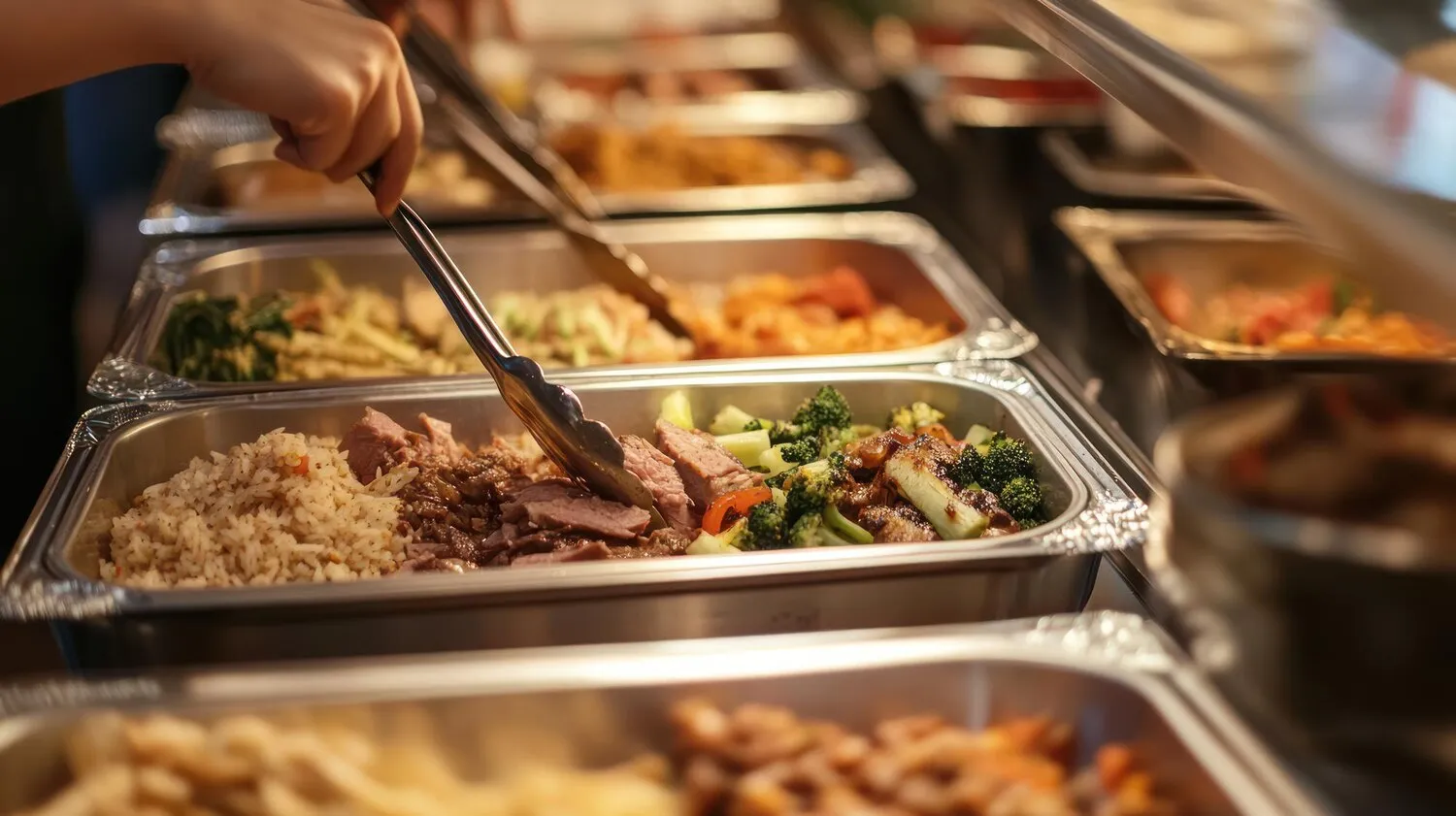
Self-Service Buffet
Buffet Carisa offers a variety of dishes in their self-service buffet, including salads, hot dishes, and desserts. Based on the reviews, it appears to feature a wide range of Brazilian cuisine.
Nutrition Facts
* The % Daily Value (DV) tells you how much a nutrient in a serving of food contributes to a daily diet. 2,000 calories a day is used for general nutrition advice.
Brazilian cuisine is a vibrant tapestry woven from Indigenous, African, and European influences. Indigenous ingredients like cassava, corn, and various fruits were staples long before colonization. The arrival of the Portuguese introduced ingredients such as rice, wheat, and livestock. The transatlantic slave trade brought African culinary traditions, notably the use of palm oil, okra, and various spices, which significantly shaped the flavors of Brazilian food.
The self-service buffet, or 'por kilo' restaurants, is a very common and culturally significant dining experience in Brazil, reflecting both practicality and a communal approach to food. It allows diners to sample a wide variety of dishes and customize their meals.
Variety and Abundance
Brazilian buffets showcase the incredible diversity of the country's regional cuisines, from the seafood-rich dishes of the coast to the hearty meat dishes of the south. The abundance of choices reflects Brazil's rich agricultural heritage.
Social Gathering
Buffets are often a gathering place for friends, families, and colleagues. The relaxed atmosphere encourages conversation and sharing of food, solidifying social bonds.
Economic Practicality
The 'por kilo' system (pay by weight) provides an economically accessible way for many Brazilians to enjoy a diverse and filling meal, especially during lunch breaks or for those with limited cooking time.
Celebrating Special Occasions
Buffets are often a convenient option for celebrating birthdays and special occasions, where everyone can choose according to their preference and dietary needs.
Brazilian cuisine is known for its bold, savory, and often slightly sweet flavors, utilizing a wide array of fresh ingredients and aromatic spices. Key flavors include a balance of earthy, tangy, and umami elements.
Common flavors found in a Brazilian buffet might include the smoky and savory taste of churrasco (grilled meats), the creamy coconut milk and palm oil base of many stews, the tangy and bright flavors of vinaigrettes on salads, the earthy notes of black beans in feijoada, and the sweet indulgence of desserts like brigadeiro (chocolate fudge balls) and passion fruit mousse. Herbs like cilantro and parsley are frequently used, as are garlic, onions, and chili peppers for added depth.
Explore Regional Dishes
Don't be afraid to try unfamiliar dishes that represent different regions of Brazil. Ask the staff for recommendations if you're unsure what something is.
Pace Yourself
With so many options available, it's easy to overeat. Start with small portions of a few dishes to get a sense of what you like before filling your plate.
Consider the 'Por Kilo' Cost
Be mindful of the weight of your plate, especially if you're on a budget. Choose dishes that are filling but not too heavy, such as salads and grilled meats without excessive sauce.
Don't Forget Dessert!
Brazilian desserts are a must-try. Save room for a small portion of brigadeiro, quindim (coconut custard), or passion fruit mousse.
Beware of Hidden Costs
Some buffets charge extra for certain items, such as grilled meats or beverages. Be sure to ask about any additional costs before you start.
Explore additional Brazilian Buffet dishes and restaurants
Explore Brazilian BuffetDiscover top dining spots and culinary experiences in Guarapuava.
Explore GuarapuavaLearn more about the food culture, restaurant scene, and culinary heritage of Brazil.
Explore Brazil